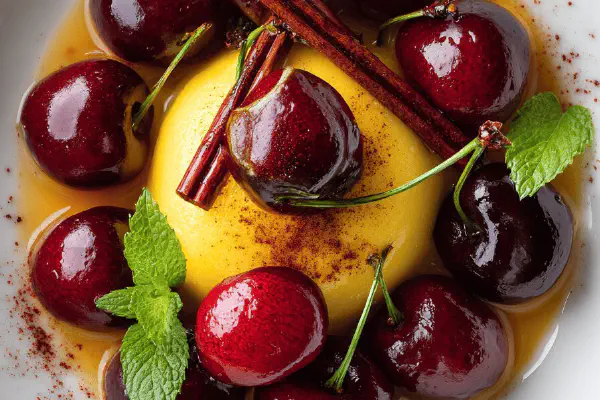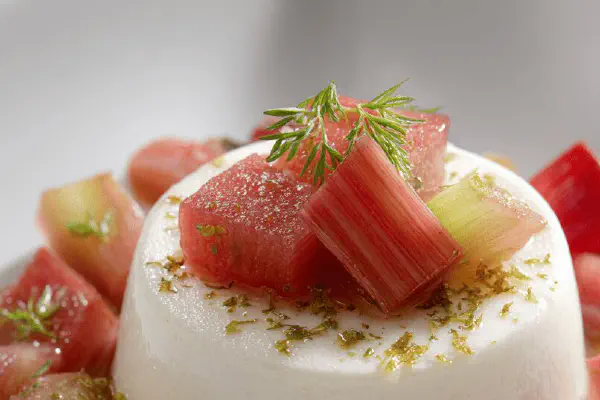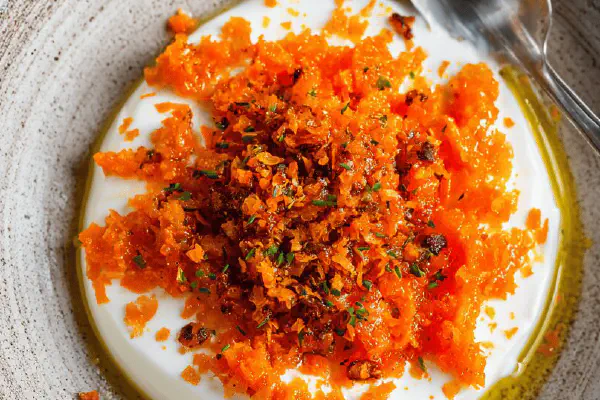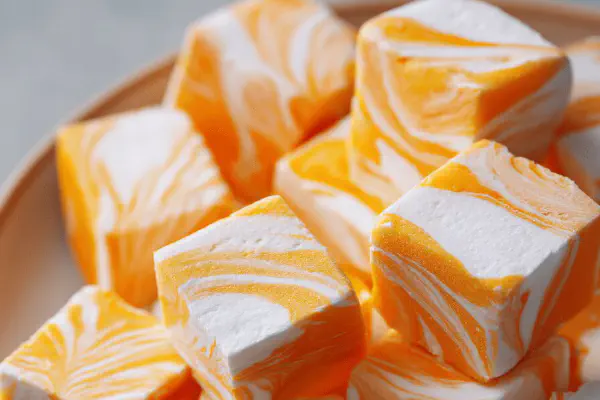Flambéed Sour Cherry Delight

By Emma
Certified Culinary Professional
Ingredients
- 20 ml browned butter
- 1 can 400 ml sour cherries packed in juice, drained
- 20 ml brown sugar
- 25 ml aged brandy
- a pinch ground cinnamon
- mango sorbet or a tart frozen fruit alternative
About the ingredients
Method
- Heat browned butter in heavy skillet over medium-high heat until foaming stops and butter smells nutty. Sound changes from bubbly to whisper quiet.
- Add cherries and brown sugar, stirring constantly. Watch cherries release juice immediately. Bubbles will change from fierce to gentler, syrup thickens slightly in 3-4 minutes.
- Sprinkle cinnamon evenly, swirl to combine. Cinnamon hits hot butter vapor, releasing sharp aroma—don’t skip this step or risk flat profile.
- Pour in brandy, immediately tilt pan away from face and ignite with long match or lighter. Flame will shoot up quickly—keep a firm wrist, flamber about 30 seconds until flames die down naturally.
- Let sauce reduce by half, stirring gently. Texture thickens, clinging to cherries like glaze. Cherries should be soft but intact, not mushy—test one carefully.
- Plate a scoop of mango sorbet, ladle hot cherries with sauce on top. Serve immediately to avoid sorbet melting into pool.
Cooking tips
Chef's notes
- 💡 Browned butter needs careful watching. Foam rises, sounds change from crackle to quiet whisper. Smell shifts from sweet to toasted nuts. Stop right there to avoid bitterness. Takes patience but worth it. Use a heavy skillet for even heat control; thin pans burn butter fast. Don’t rush, slow medium heat is your friend.
- 💡 When adding cherries plus brown sugar, constant stirring is key. Look for bubbles softening from fierce boil to mellow simmer. Juice releases fast, sugar dissolves unevenly. Don’t mash cherries. Syrup thickens slightly in 3-4 minutes. Timing crucial here. Too much heat ruins texture, too long leaves watery sauce.
- 💡 Cinnamon hit is abrupt—sprinkle evenly, swirl quick. Hitting hot butter vapor releases popping aroma. Skip or delay and spice flatlines. Ground cinnamon preferred; star anise alternative but reduce quantity drastically to avoid overpowering. Layer of smell changes how sauce reads, subtle but noticeable.
- 💡 Flambé step demands focus. Pour brandy away from face. Ignite with long match or lighter swiftly; flame spikes fast, reach peak then die down naturally. Don’t blow flame out. Flame duration shows alcohol burning off. Too long means cold flame source or excess liquid; too short can leave harsh burn. Wrist control matters here.
- 💡 Sauce reduction needs gentle stirring. Texture should cling like glaze not thick paste. Test cherries carefully with spoon pressure; soft but intact. Over-reduce leads to sticky chewiness, underdone sauce too thin. Adjust heat to balance. Sauce changes visible in shimmer and thickness but smells more fragrant as it concentrates.
Common questions
Can I use fresh cherries?
Fresh works but watch liquid. Drain or reduce added water to avoid runny sauce. Fresh fruit softer so reduce cook time carefully; drain juice well. Might need shorter flambé, watch texture closely.
What if no brandy?
Skip flambé, extend simmer for thicker sauce. Spice and sugar carry flavor. Use fruit juice or non-alcoholic spirits but no flame effect then. Adjust reduction phase slightly longer to build intensity. Results differ but still tasty.
Sauce too thin or watery?
Increase heat slightly to speed reduction. Stir gently avoid burning sugar. Drain cherries better before cooking or reduce liquid used initially. Thickening takes patience, don't rush with flour or cornstarch—changes profile badly.
How to store leftovers?
Refrigerate cherries separate from sorbet; sauce thickens cold and hardens. Reheat slowly over low heat, stir to prevent caramel burns or drying out. Freeze cherries possible, but texture softens. Sorbet should stay frozen till plating.



